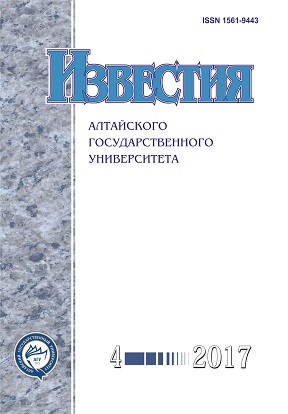A Method for Estimating the Predictive Power of a Binary Indicator
Abstract
The paper considers the solution of one of the types of classification problems in data analysis. Let us assume that the set of objects under consideration is in some way divided into two groups (we call this a regular partition). Along with this, each of the objects in view has a certain binary indicator measured – for each of the objects it has only values 0 or 1. It is required to estimate the confidence to assign the object to one of the groups of the regular partition using the knowledge of this indicator. This problem is a variant of the so called discriminant analysis problem, where the rule for assigning an object to one of the groups is called prognostic. So, the introduced numerical characteristic of the indicator of the informational content is called the prognostic power of it. The characteristic is introduced by estimating the differences between the regular partition of the set and the partition constructed by the binary indicator being studied. The magnitude of the difference is determined by calculating the cluster metric previously introduced in the work of the first author. This characteristic is compared with the correlation coefficient and the relative risk ratio commonly used in such cases.
DOI 10.14258/izvasu(2017)4-15
Downloads
Metrics
References
Айвазян С.А., Бухштабер В.М., Енюков И.С., Мешалкин Л.Д. Прикладная статистика: Классификация и снижение размерности. -М., 1989.
Mills P. Efficient statistical classification of satellite measurements // International Journal of Remote Sensing. - 2011. - № 32(21). DOI: 10.1080/01431161.2010.507795.
Haghighat M., Abdel-Mottaleb M. & Alhalab W. Discriminant Correlation Analysis: Real-Time Feature Level Fusion for Multimodal Biometric Recognition. // IEEE Transactions on Information Forensics and Security. - 2016. - V. 11, № 9. DOI: 10.1109/TIFS.2016.2569061.
Straus S., Glasziou P., Scott Richardson W., Brian Haynes R. Evidence Based Medicine. -Elsevier, Churchhill, Livingstone, 2010.
Sackett D.L Rosenberg W.M. Gray J.A. Haynes R.B. Richardson W.S. Evidence based medicine: what it is and what it isn’t. // BMJ. -1996. - № 312 (7023). D0I:10.1136/bmj.312.7023.71.
McLachlan G. Discriminant Analysis and Statistical Pattern Recognition. - Wiley, 2004.
Дронов С.В. Методы и задачи многомерной статистики. - Барнаул, 2015.
Dronov S.V., Dementjeva E.A. A new approach to post-hoc problem in cluster analysis // Model Assisted Statistics and Applications. - 2012. -Vol. 7, № 1. DOI: 10.3233/MAS-2011-02-01.
Crawford-Brown D.J. Theoretical and Mathematical Foundations of Human Health Risk Analysis: Biophysical Theory of Environmental Health Science. - Springer Science & Business Media, 2012.
Fleiss J., Levin B. Statistical Methods for Rates and Proportions. - Wiley, 2003.
Copyright (c) 2017 С.В. Дронов, А.П. Фоменко

This work is licensed under a Creative Commons Attribution 4.0 International License.
Izvestiya of Altai State University is a golden publisher, as we allow self-archiving, but most importantly we are fully transparent about your rights.
Authors may present and discuss their findings ahead of publication: at biological or scientific conferences, on preprint servers, in public databases, and in blogs, wikis, tweets, and other informal communication channels.
Izvestiya of Altai State University allows authors to deposit manuscripts (currently under review or those for intended submission to Izvestiya of Altai State University) in non-commercial, pre-print servers such as ArXiv.
Authors who publish with this journal agree to the following terms:
- Authors retain copyright and grant the journal right of first publication with the work simultaneously licensed under a Creative Commons Attribution License (CC BY 4.0) that allows others to share the work with an acknowledgement of the work's authorship and initial publication in this journal.
- Authors are able to enter into separate, additional contractual arrangements for the non-exclusive distribution of the journal's published version of the work (e.g., post it to an institutional repository or publish it in a book), with an acknowledgement of its initial publication in this journal.
- Authors are permitted and encouraged to post their work online (e.g., in institutional repositories or on their website) prior to and during the submission process, as it can lead to productive exchanges, as well as earlier and greater citation of published work (See The Effect of Open Access).








